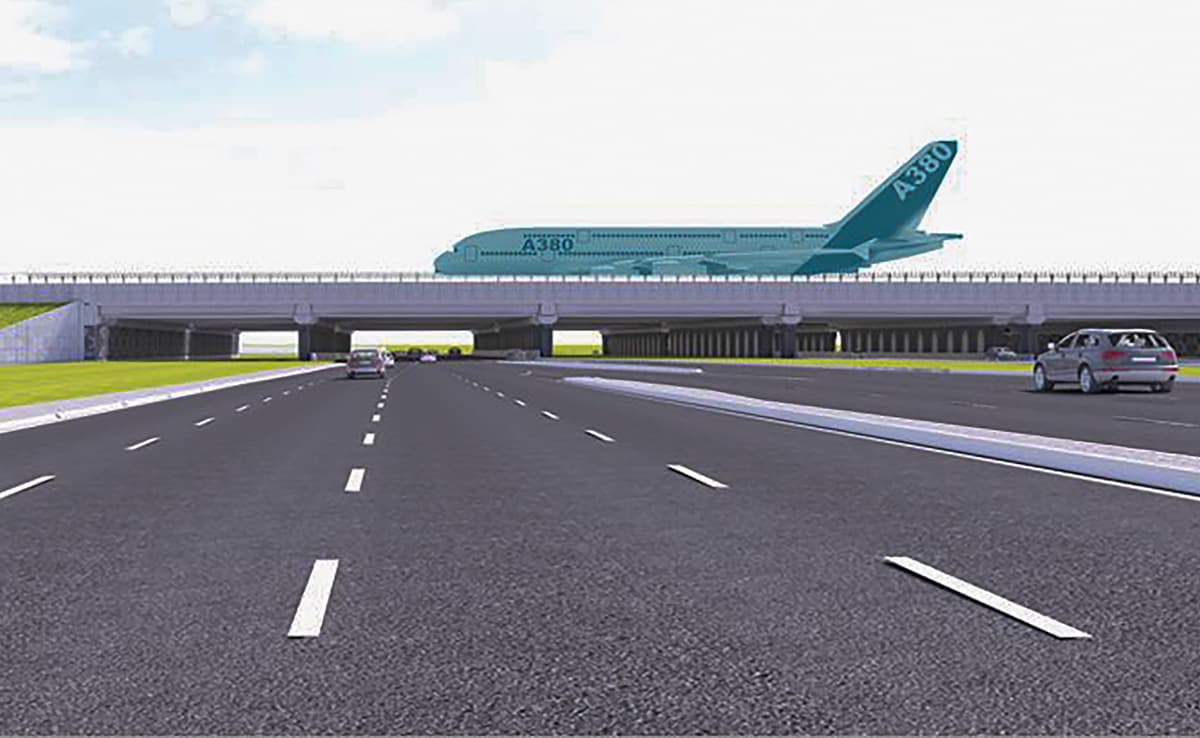By mid-July 2023, a dual Elevated Cross Taxiway (ECT), the first of its kind in India is set to begin operations at Indira Gandhi International (IGI) Airport in Delhi. The ECT is meant to reduce waiting times for aircraft, enhance operational efficiency and reduce carbon emissions.
The facility stretches over a distance of 2.1 kilometres between the Northern and Southern airfields on the eastern side of the airport. It is approximately 202 meters wide featuring two taxiways. One of the taxiways will be used by planes after landing while the other is for aircraft to use before taking off.
Noteworthy, the dual-lane elevated Code F taxiways are built with a strong and sturdy structure. As a result, this guarantees the safe and simultaneous passage of two aircraft including the A-380s and the B-777s.
Lea también Construction contract for Virar-Alibaug multimodal corridor (VAMMC) Project in India awarded
Significance of the dual taxiway at Indira Gandhi International Airport in Delhi, India
Owing to the ECT, passengers can expect a substantial reduction in waiting time. This is because planes will now take about 10 minutes to reach Terminal 1 when they land. Initially, it took them 20-25 minutes. At the same time, the take-off process will also be expedited. The distance between the third runway and Terminal 1 has been reduced by 7 kilometres. Before the ETC it was 9 kilometers.
In addition to enhancing passenger convenience, the dual ECT at Indira Gandhi International Airport in India has several environmental benefits. It is estimated that the airport will now save 55,000 tonnes of CO2 or its thereabouts per year. This will significantly contribute to the IGI Airport’s goal of becoming a “Net Zero Carbon Emission Airport” in 7 years’ time.
Furthermore, the ECT will contribute to the conservation of natural resources. These resources include aviation turbine fuel (ATF). Consequently, it will promote sustainability in aviation as a result.

